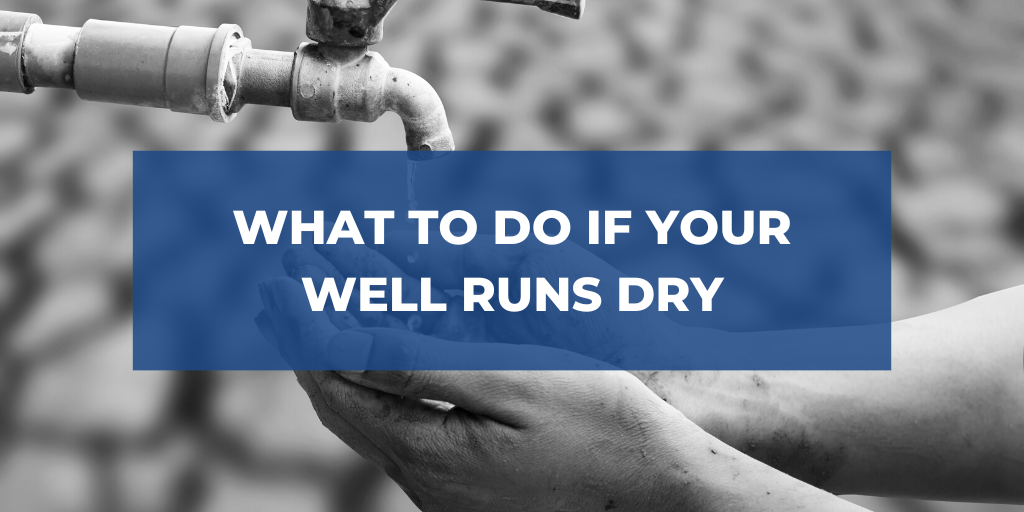At the beginning of July, the Washington State Department of Ecology issued a drought advisory for the state. Not only did Washington experience the warmest May on record, but we also had an unusually dry spring and early summer. By July, most streamflows were projected to fall to 75% below normal, and the state only experienced 47% of normal precipitation between the end of April and the end of June. The drought advisory helps prepare residents in the event the dry conditions persist. While some WA well owners already indicated their wells were running low, others have not been impacted. However, if the dry conditions continue, here are several ways to manage if your well runs dry or shows signs of getting low.
Indications Your Water Level is Low
There are several early signs that the water level in your well is getting too low. These are just a few to look out for:
- Sputtering or “coughing” when you turn on your taps. This indicates there is air in the pump (not just water).
- Reduced water flow.
- Tap water looks murky or even muddy.
- The taste of your water changes.
While these can indicate low water levels, they can also indicate different well or pump issues. First, check your fuses and ensure the pump and pressure tank are still receiving electricity. Another option is to have a professional check the wiring to the pump.
Once other potential issues are eliminated, it’s time to consider that your well may be running dry. Measuring the water level in your well is the only definitive way to determine the health of your well. For tips on checking your well water level, visit our blog, “When and How to Check Your Static Water Level.”
How to Fix Your Well When it Runs Dry
If you are sure your well is out of water, the next best step is to speak to a well professional about options for fixing or replacing your well. Drilling professionals can better assess the condition of the well. They may recommend options such as:
- Reviewing the lifespan of your well. How long has it been in place? Most modern, professionally drilled wells should last an estimated 30 to 50 years (or longer). If your well is still young and in good condition, this opens up options other than well replacement.
- Determining if sediment and mineral build-up inside the well is impacting water flow. If so, cleaning and treating the well may restore water to your home.
- Lowering the pump to reach the lower water table. This is not always an option, but your well professional will know if the pump can be placed lower.
- Deepening the well. If your well was drilled when the water table was much higher, it could be that a deeper well is needed to reach more drought-resistant groundwater.
Regardless of the steps you take to replenish your water supply, it is important to always test your well water after any work is done on your well. Even well maintenance affects the water supply. A water test is a simple way to keep you and your family safe.
Do I Need to Replace My Well?
In some cases, drilling a new, deeper well is the best option when your current well runs dry. It is possible there is a better location on your property that will connect you to a deeper, more drought-resistant part of the water table. However, not every drilling expedition will lead to water, so bear that in mind as you work with your well professional.
Also, as a new well is drilled, it is important to have your professional drillers decommission your old well. This prevents any contamination of the groundwater and your new well.
Temporary Solutions to Solve Low Well Water Levels
According to drought.gov, currently 4.8 Million residents are in areas of drought or potential drought conditions. While digging a new well may be your last resort when your well runs dry, there are some options for reducing water usage immediately to help alleviate the low water levels caused by drought.
Aside from conserving or eliminating your outdoor water usage, you can also encourage your family to reduce shower time, don’t leave any faucets running when not in use, and only run loads of laundry or dishes when they are full.
While we hope and wait for rainy conditions to return and replenish our groundwater, what other ways do you and your family conserve your well water? We would love to hear your tips and tricks!

